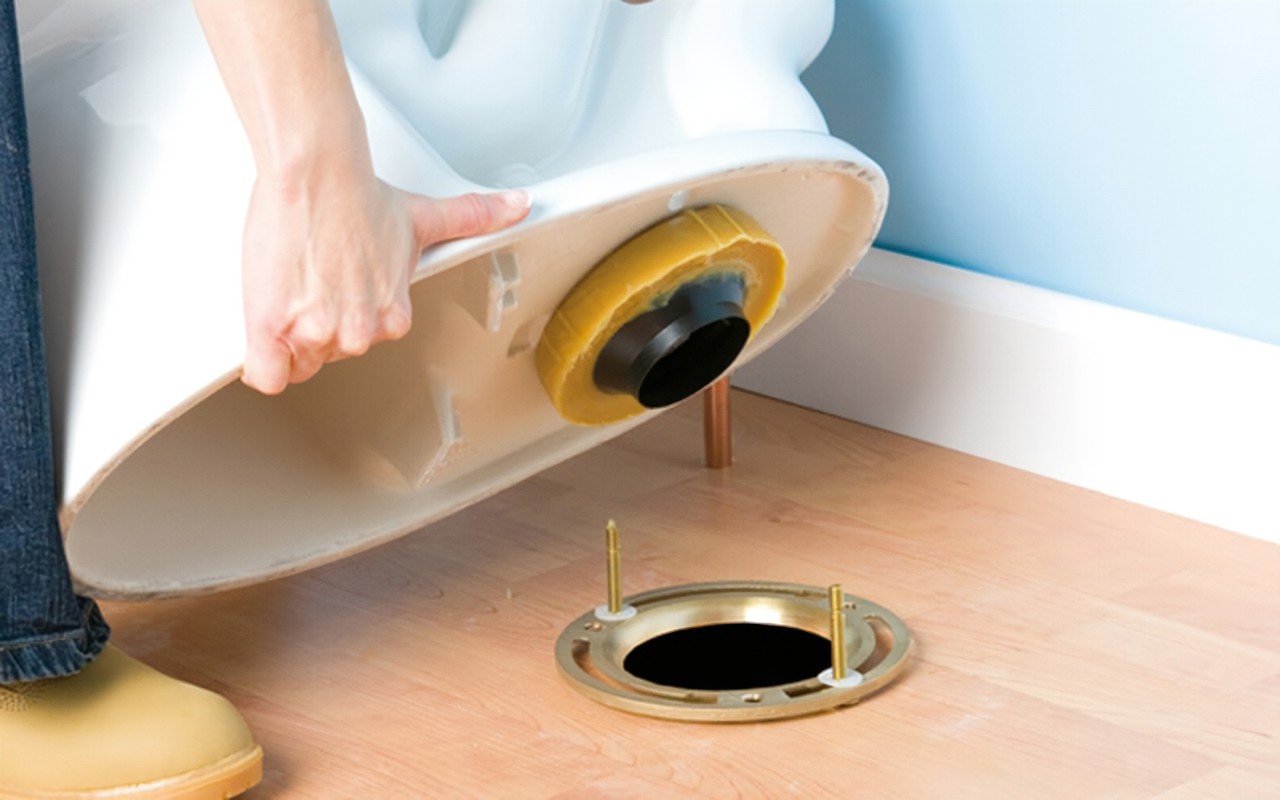Have trouble with a toilet flange that’s too close to the wall? Don’t worry, you’re not alone! But don’t despair. We have the solution. Follow our easy steps and get your bathroom back in working order in no time!
In this blog post, we’ll show you how to fix a toilet flange that’s too close to the wall. We’ll explain what a toilet flange is and why it needs to be installed correctly.
We’ll provide detailed instructions on how to measure, adjust, and install a new one if needed. Plus, we’ll give you tips on how to prevent future issues so you won’t have to worry about them again.
Get ready for hassle-free use of your toilet flange for years to come. Let’s get started fixing that pesky toilet flange now!
Contents
- 1 What is a Toilet Flange?
- 2 How Close Can a Toilet Flange Be to a Wall?
- 3 Common Causes of Toilet Flanges That Are Too Close to the Wall
- 4 How to Fix Toilet Flange That’s Too Close to Wall
- 5 Preparing the Floor before Extending the Toilet Flange
- 6 Extending the Toilet Flange After Tiling
- 7 Moving a Toilet Closer to the Wall
- 8 Conclusion
What is a Toilet Flange?
Do you know what a toilet flange is? It’s an essential part of your bathroom, and it helps keep your toilet securely in place.
A toilet flange is a pipe fitting that connects the toilet to the drainage system. It’s usually made of plastic or metal and has a hole in the center for the waste line. The flange also has two slots for bolts to secure it to the floor, and it’s sealed with wax or a gasket.
The flange sits on top of the drainpipe and prevents sewage from leaking out of the pipe. It also provides stability for the toilet, so it doesn’t move or shift when someone sits on it. Without a properly installed flange, your bathroom could be a disaster!
So next time you’re in your bathroom, don’t forget to thank your toilet flange for keeping everything in its place.
How Close Can a Toilet Flange Be to a Wall?
Are you having trouble with your toilet flange being too close to the wall? You’re not alone! Toilet flanges should have at least 1/4 inch of space between them and the wall to ensure a tight seal and prevent leaks and other plumbing issues.
If this is an issue for you, several solutions can help. You can use a longer wax ring to create a better seal between the flange and the wall.
Alternatively, you can add a spacer between the flange and the wall for more room. Or, you can replace your existing toilet flange with one that has more space between it and the wall.
No matter what solution you choose, make sure that your toilet flange has enough clearance from the wall to prevent any plumbing issues in the future.
Common Causes of Toilet Flanges That Are Too Close to the Wall
Are your toilet flanges too close to the wall? This can make it difficult to properly fit and secure your toilet, so it’s important to understand the common causes of this issue.
Poor installation of the toilet flange is one of the most common causes. If not done correctly, it may end up too close to the wall. Installing a new toilet on an existing flange can also lead to this problem if not done carefully.
Faulty measurements when installing the toilet flange and improperly tiled walls are other possible causes. Finally, old, corroded, or damaged toilet flanges can also contribute to this issue.
It’s important to take extra care when measuring and installing your toilets to avoid any potential problems! Knowing the common causes of toilet flanges that are too close to the wall can help you ensure a successful installation.
How to Fix Toilet Flange That’s Too Close to Wall
Measure the Distance
Measuring the distance between the toilet flange and the wall is the first step to determining what type of solutions are available.
It is important to measure from the center of the flange to the wall and then measure from the center of the flange to the floor. This will help to determine if the flange can be adjusted or if a new flange needs to be installed.
Adjusting the Flange
If there is enough space between the flange and the wall, then it may be possible to adjust the flange so that it is further away from the wall.
This can be done by loosening the screws on the flange and then sliding it away from the wall. Once the desired distance is achieved, tighten the screws back up and make sure that everything is secure.
Installing a New Flange
If there is not enough space between the flange and the wall, then a new flange may need to be installed.
This can be done by removing the old flange and then installing a new one in its place. It is important to make sure that all of the screws are tightened securely and that any seals are applied correctly so that no leaks occur.
Using Spacers
Another option for fixing a toilet flange that is too close to the wall is to use spacers. These spacers can be placed between the flange and the wall to create more space between them. This will allow for more room when installing a new flange or adjusting an existing one.
Sealing Gaps
Once all of the adjustments have been made, it is important to make sure that any gaps between the flange and the wall are sealed properly.
This can be done using caulk or silicone sealant to prevent any water from seeping through. Once this is done, it is important to check for any leaks before using the toilet again.
Preparing the Floor before Extending the Toilet Flange
Are you looking to extend the toilet flange in your bathroom? Before you get started, it’s important to make sure that the floor is prepped properly. Here are some tips to help you prepare the floor for this task.
Start by clearing away any debris from the floor. Check for cracks, gaps, or unevenness and fill or level it out.If there are any tiles on the floor, remove them before beginning work on the toilet flange.
If you need to install new tiles, measure and cut them carefully before laying them down. Once all of these steps have been completed, you can begin working on extending the toilet flange with confidence.
Extending the Toilet Flange After Tiling
Extending your toilet flange after tiling can seem like a daunting task, but it doesn’t have to be! With the right tools and a bit of know-how, you can extend your toilet flange with ease.
Start by using a hacksaw to cut through the floor tiles and any other material that is covering the flange. Don’t forget to wear protective gloves and safety glasses for your safety.
Once you have made the cuts, remove the old flange and replace it with an extension flange. Extension flanges come in different sizes and materials, so make sure you purchase one that fits your needs.
Finally, once you have installed the new extension flange, remember to caulk around it for a watertight seal. This will help prevent any leaks or water damage in the future.
Moving a Toilet Closer to the Wall
Are you looking to make more space in your bathroom? Moving a toilet closer to the wall is an easy way to do just that! Though it may seem intimidating, with some careful planning and preparation, you can have a successful installation in no time.
First, check that there’s enough space for the tank and base of the toilet. Make sure the flange is sealed and secured before removing the existing one from the floor and installing a new one that’s shorter and closer to the wall.
You may also need to adjust or replace any piping connected to the toilet.
If you’re tiling around your toilet, use spacers or shims between your tiles and your toilet for an even gap. Once all connections are secure, it’s time to test out your newly installed toilet!
Moving a toilet closer to the wall can be an easy way to make more room in your bathroom.
Conclusion
Fixing a toilet flange that is too close to the wall can be tricky.
But, with the right tools and steps, it can be done. Shut off the water supply and remove your toilet from the floor. Measure the required distance from the wall and mark it on the floor.
Drill two holes into the floor at this mark, and place two new screws into these holes. Place your new flange onto these screws and secure it with nuts and washers before re-installing your toilet onto the new flange.
To prevent future issues, check for signs of wear and tear periodically; if it starts to rust or corrode, replace it right away.





